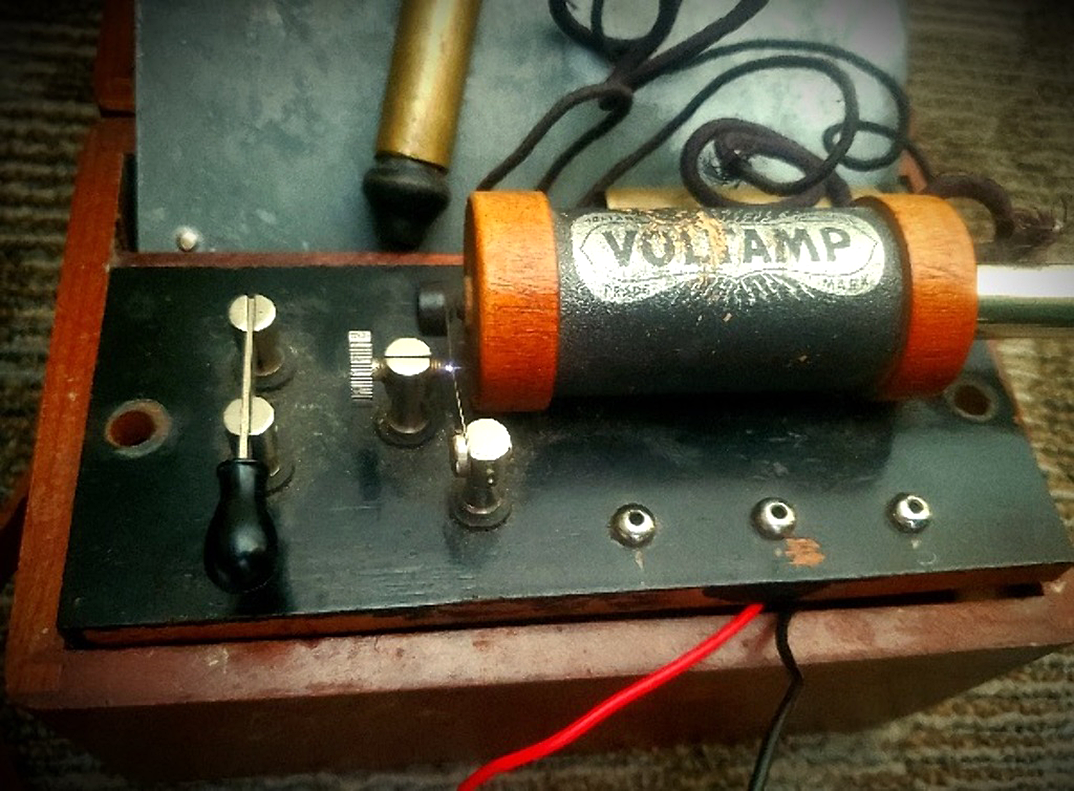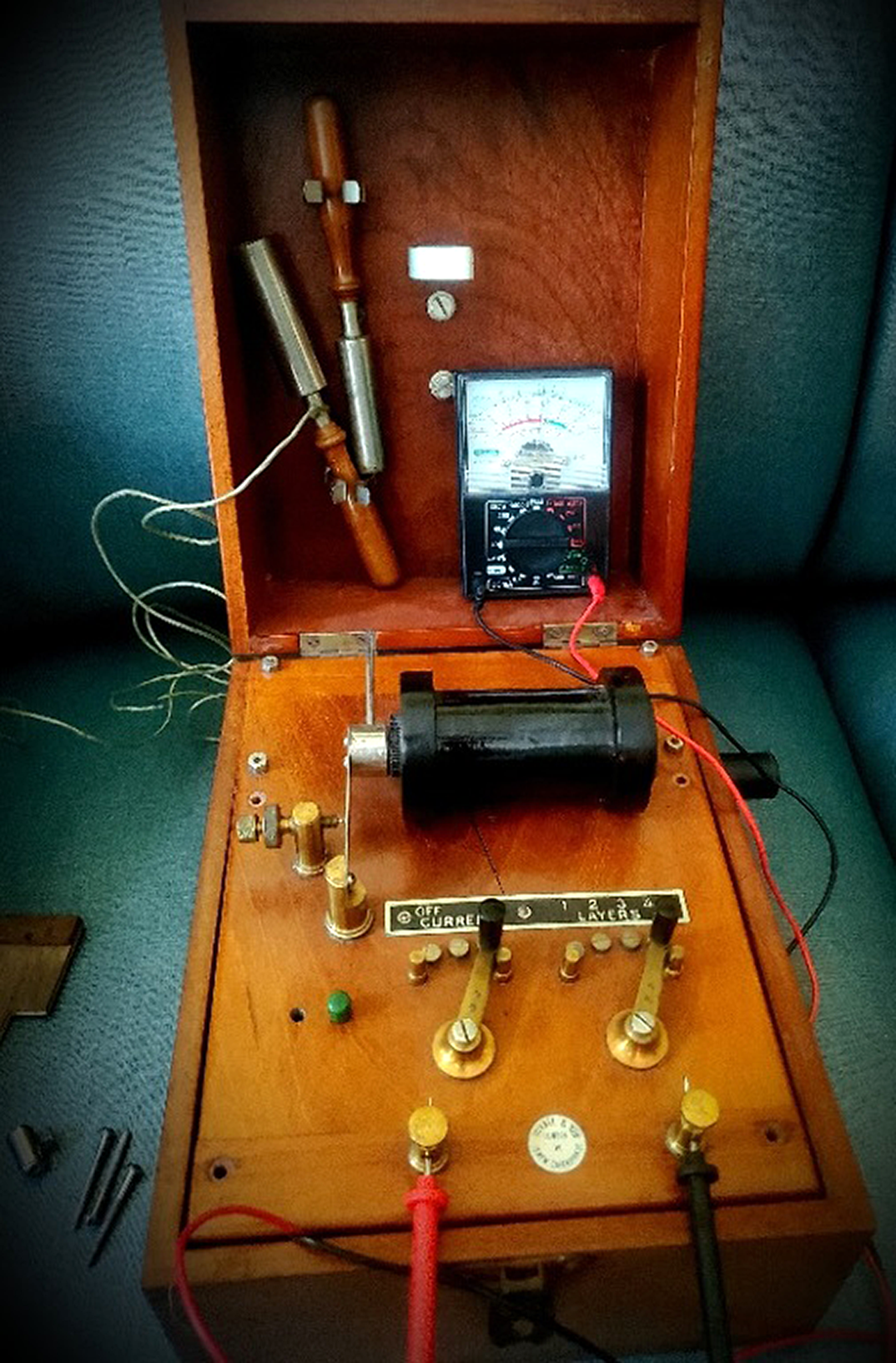No CrossRef data available.
Article contents
Late 1800s Fringe Electrotherapeutic Devices: Comparative Electrical Capabilities
Published online by Cambridge University Press: 01 September 2022
Abstract
Desperation for cure led to 19th century invention-- electrotherapeutic devices; replete with hyperbolic claims of cure-all, perceived ineffectiveness, and potential harm rendered the modality as quackery but were used in early brain stimulation, melancholia treatment, and cortex mapping. Here, antique devices are restored, and their electrophysiological qualities ascertained.
Determine the comparative capabilities of these devices in delivering electrostimulation and compare with modern standards to understand possible electrophysiological sequelae.
Devices known as “medical batteries” were analyzed. Power delivery utilized a “voltaic battery”, simple circuit, and a conductor wrapped around an iron core. When the circuit is energized, the core is magnetized by direct current of the battery which induces an alternating current that electrifies probes used on the body. Due to their marked age, a common 9-volt battery was exchanged for the corrosive dry cell paste batteries. Electrical parameters were then measured.


Table 1
| Device | Frequency (Hz) | Resistance (Ohms) | Max Output (Amps) | Min Output (Amps) | Max Output (Volts) | Min Output (Volts) |
|---|---|---|---|---|---|---|
| Voltampa | 2k – 12K | 60 | 0.66 | 0.33 | 60V | 20V |
| J.H. Bunnell & Co.’s No. 4 D.D. | 7k-10k | 50 | 6 | 0.4 | 300V | 20V |
| Schall & Son (London)b | 300-1200 | 40 | 10.5 | 2.75 | 420V | 110V |
Devices for electrotherapeutics ranged from anemic vibrations to dangerous tetany inducing shocks. Measuring the capabilities of these devices shows the robust yields possible if the original higher capacity batteries were utilized. The reality is, cure or not, the devices were surprisingly potent. It is interesting that, albeit unrefined, efficacious doses were available before modern electrification.
No significant relationships.
- Type
- Abstract
- Information
- European Psychiatry , Volume 65 , Special Issue S1: Abstracts of the 30th European Congress of Psychiatry , June 2022 , pp. S261 - S262
- Creative Commons
- This is an Open Access article, distributed under the terms of the Creative Commons Attribution licence (http://creativecommons.org/licenses/by/4.0/), which permits unrestricted re-use, distribution, and reproduction in any medium, provided the original work is properly cited.
- Copyright
- © The Author(s), 2022. Published by Cambridge University Press on behalf of the European Psychiatric Association



Comments
No Comments have been published for this article.